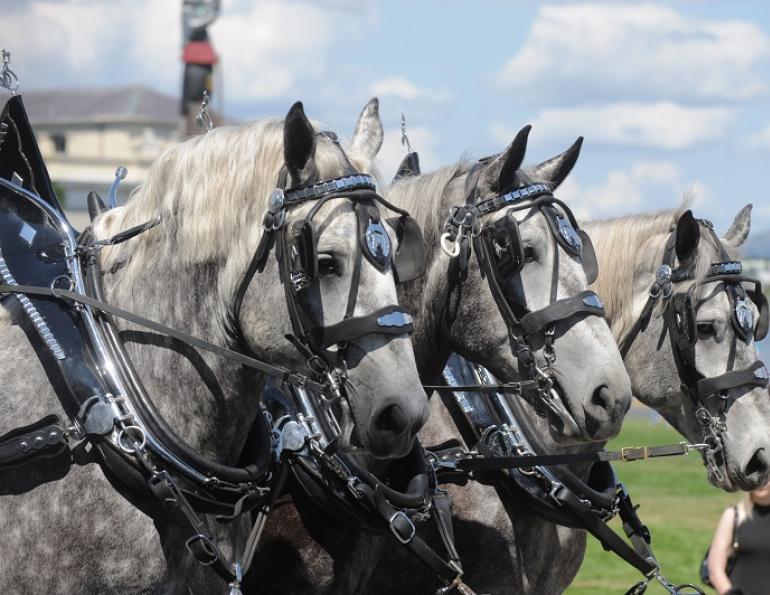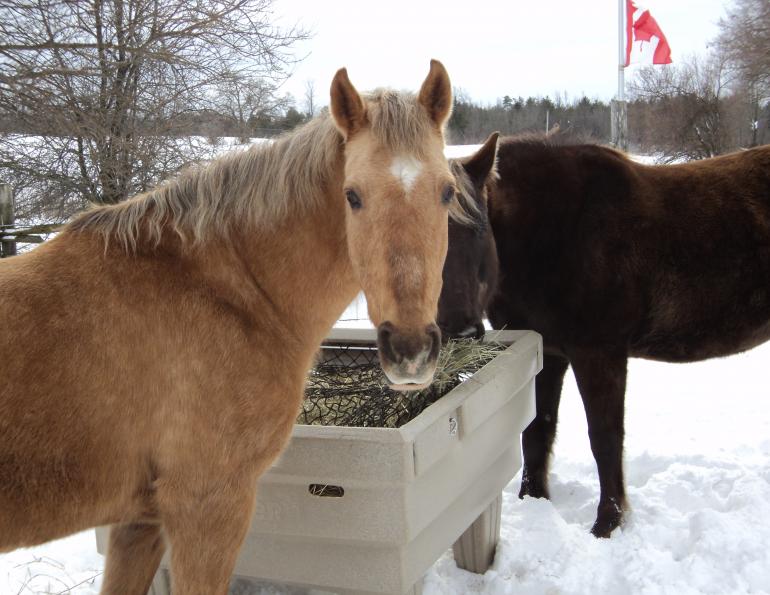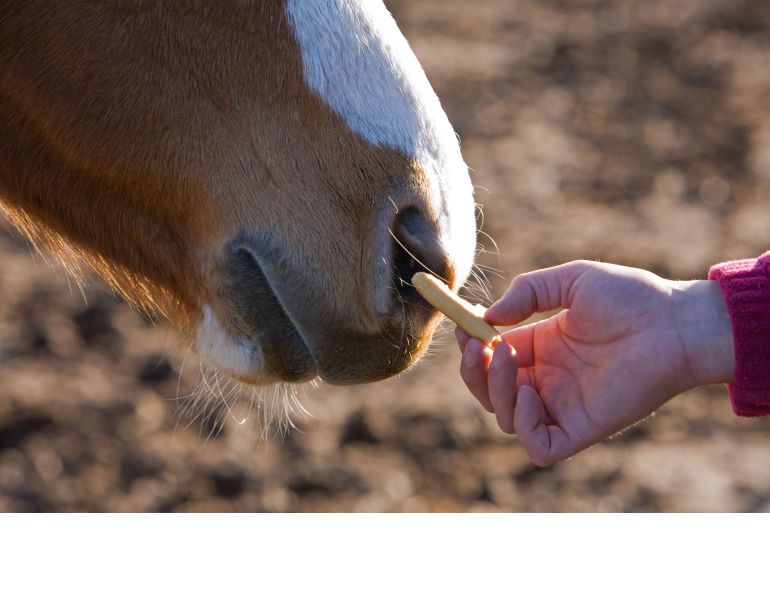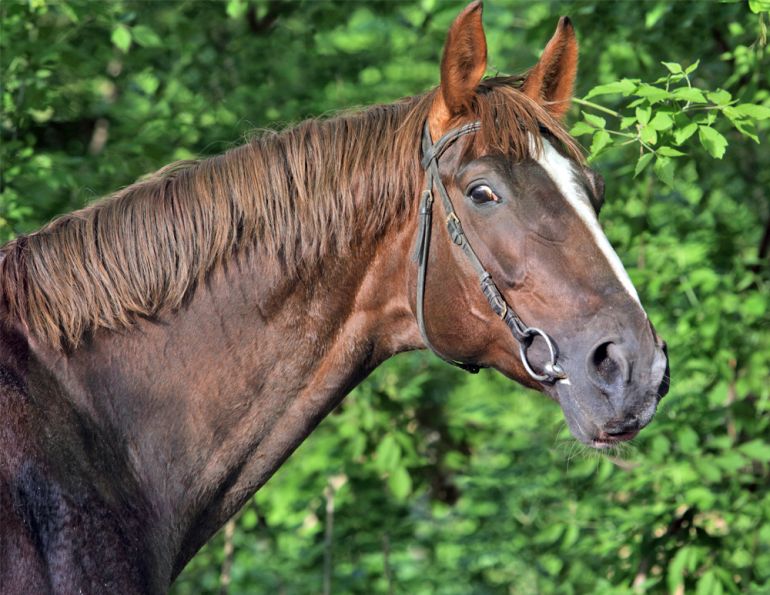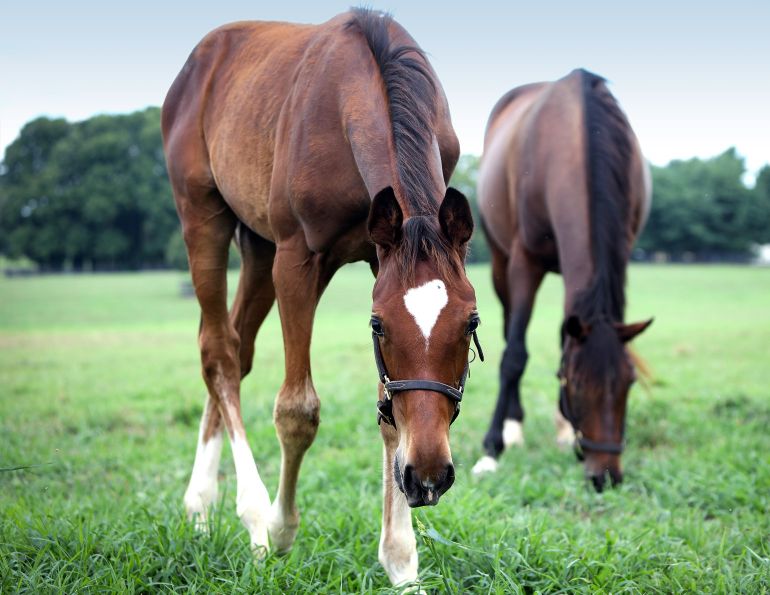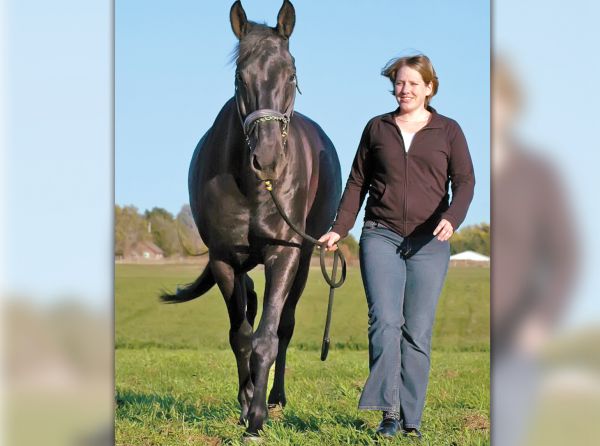By Mark Andrews
Horses can tell the difference between dominant and submissive body postures in humans, even with people they don’t know, according to a new study.
The research, from the University of Sussex, is published in Animal Cognition. The authors report that the findings enhance our understanding of how animals can communicate using body posture across the species barrier, and are specifically helpful for informing horse handlers and trainers about the ways horses perceive human body language.
Psychology researchers worked with 30 domestic horses, recruited from equestrian centres in Suffolk and East Sussex, to see whether they were more likely to approach a person displaying a dominant body posture (the person standing straight, with arms and legs apart and chest expanded), or a submissive posture (the person slouching, keeping arms and legs close to the body, relaxed knees).
They used ten different demonstrators in a series of trials to introduce variation. Each demonstrator served as dominant and submissive in two out of four trials, to avoid experimenter bias producing a corresponding posture preference.
All handlers were women, dressed in similar clothing and of similar size. A dark neck warmer covered their faces to eye level to minimise facial expression cues.
The researchers found that even though the horses had been given food rewards previously by each person when in a neutral body posture, they were significantly more likely to approach the individual displaying a submissive rather than a dominant posture in follow-up trials.
Co-lead author of the study, psychology doctoral student Amy Smith, said: “Horses are often thought to be good at reading human body language based on anecdotal evidence such as the ‘Clever Hans effect.’ [The Clever Hans effect is used in psychology to describe when an animal or a person senses what someone wants them to do, although they are not deliberately given signals.] However, little research has tested this empirically. These results raise interesting questions about the flexibility of cross-species communication.”
Dr Leanne Proops, co-author (University of Portsmouth), says “Evolutionarily speaking, animals – including humans - tend to use larger postures to indicate dominance, or threat, and smaller postures to indicate submissiveness. Horses may therefore have an instinctual understanding of larger vs. smaller postures.”
Last year Smith, who is part of the Mammal Vocal Communication and Cognition Research Group in the School of Psychology at the University of Sussex, co-led a study that found horses were able to distinguish between angry and happy human facial expressions.
Clara Wilson, who co-authored the paper while an undergraduate at the University of Sussex, says, “We were interested in dominant and submissive postures with horses specifically because, although many trainers use posture as a training cue, little research has investigated whether horses would be sensitive to these cues without any specific training. Results like these encourage us to be more conscious of the signals we exhibit when interacting with horses and other animals to facilitate a smooth animal-human relationship.”
The authors conclude: “This study provides novel evidence that domestic horses may spontaneously discriminate between, and attribute communicative significance to, human body postures of dominance; and further, that familiarity with the signaller is not a requirement for this response.”
Printed with permission of Mark Andrews, Equine Science Update.
This article was originally published in Canada’s Equine Guide 2018, a publication of Canadian Horse Journal.
Photo: Canstock/Sonyae




